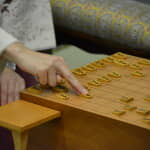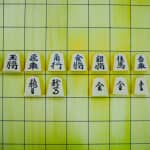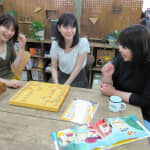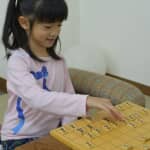Shogi 24 October 2016
Shogi Rules – How to Play Shogi – : Step 1-3 Shogi Piece Types
Explore art of Shogi. A professional Shogi player invites you to the world of Shogi along with tra-ditional Japanese culture.
We will learn piece moves today. Shogi has 8 types of pieces.
The previous step
The most important one is Gyoku (King). This piece is also called “OUSAMA” or “OU,” and it means King in Japanese. Many Shogi pieces have names of jewels, and thus, originally, only Gyoku (King) was used. Yet, the names for the piece changed in the course of history. The piece now has two names; Gyoku and Ou (King) .
Generally, Gyoku (King) is used for novices or younger players and Ou is for instructors or older players as manners of Shogi. This rule applies even to professional matches. Players’ Dan, a rank-ing system to indicate the level of one’s ability, and ages are taken into consideration to decide which player uses Gyoku or Ou (King) .
Gyoku (King) can move one square in any direction.
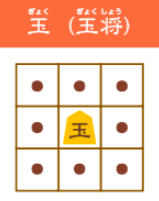
Next, let’s learn Kin (Gold) and Gin (Silver), the essential pieces for defense and offense.
If you visualize the shape of mushroom, I think that helps you to memorize Kin’s (Gold) moves. Don’t you think it has a mushroom shape?

For Gin’s (Silver) moves, please visualize a person extending four limbs diagonally.
In my class, many children call this “Anpanman,” which is the main character of very popular Japanese Manga.
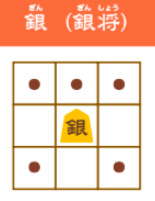
Kin (Gold) and Gin (Silver) complement each other. Gin (Silver) can go back diagonally, whichKin (Gold) cannot. Kin (Gold) can go whereGin (Silver) cannot. Shogi ancestor was originated in India and disseminated to the East and the West. It changed adapting culture of each region to be chess in Europe, Xiangqi in China and Malruk in Thailand. Unlike those other descendants, Shogi has a unique feature that each piece’s move is very small. Each piece must mutually cooperate to check. Japanese culture values harmony and teamwork. I think that Shogi ancestor encountered Japanese culture and fused into it to be Japanese Shogi of today.
Oh, this is off topic of today’s lesson. Kaori and Ayumi, did you learn the pieces’ moves?
Comments from the girls’ mom
My girls were so excited to extend their legs and arms when they learnt the moves of Gin (Silver). They happily moved their bodies and posed as seen in the picture below. Girls cannot read Chinese characters yet, but those characters on the Shogi pieces did not bother them learning since they could recognize the shapes of the characters.
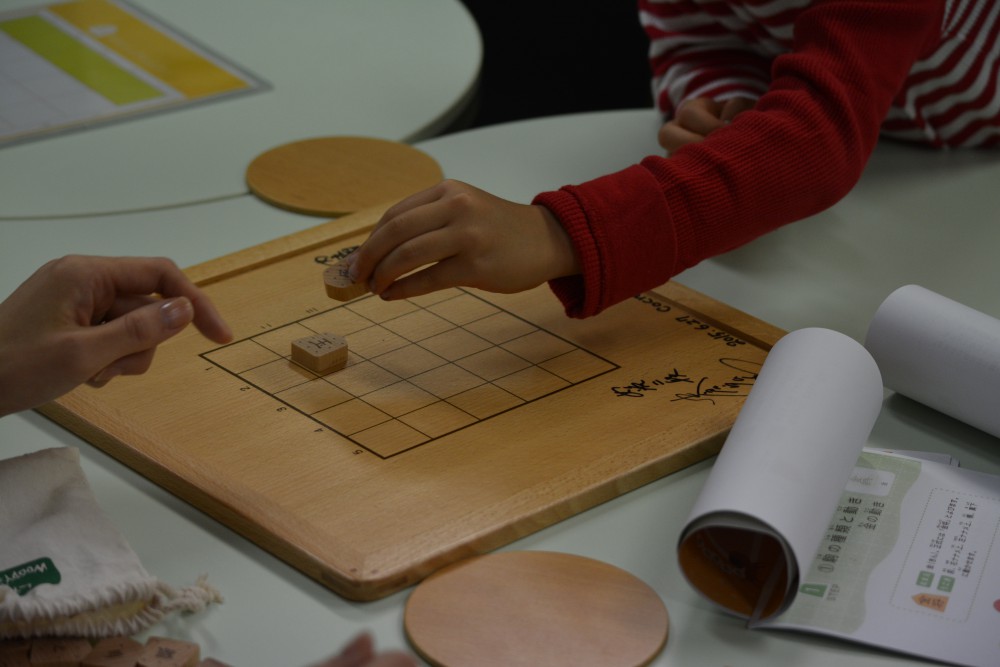
Yet, I found that girls sometimes peeked at dots printed on the pieces for novice players to guide their piece’s moves 🙂
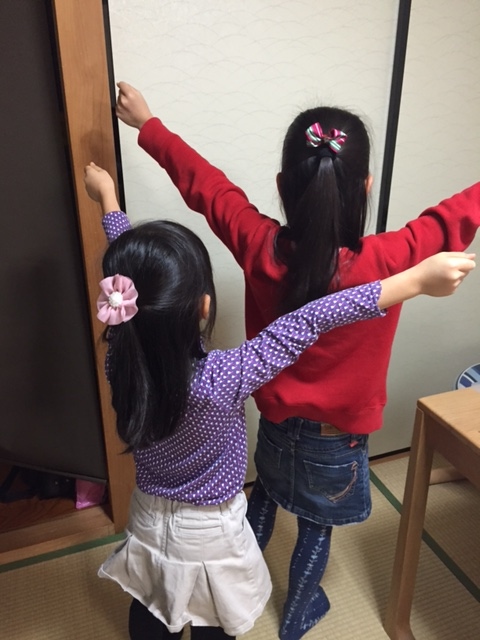
The next step


